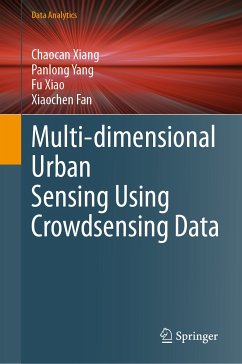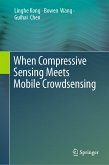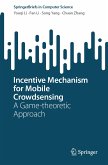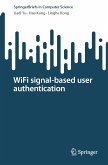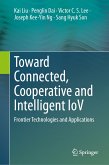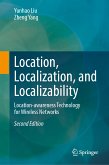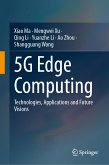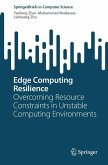In smart cities, the indispensable devices used in people's daily lives, such as smartphones, smartwatches, vehicles, and smart buildings, are equipped with more and more sensors. For example, most smartphones now have cameras, GPS, acceleration and light sensors. Leveraging the massive sensing data produced by users' common devices for large-scale, fine-grained sensing in smart cities is referred to as the urban crowdsensing. It can enable applications that are beneficial to a broad range of urban services, including traffic, wireless communication service (4G/5G), and environmental protection.
In this book, we provide an overview of our recent research progress on urban crowdsensing. Unlike the extant literature, we focus on multi-dimensional urban sensing using crowdsensing data. Specifically, the book explores how to utilize crowdsensing to see smart cities in terms of three-dimensional fundamental issues, including how to incentivize users' participation, how to recommend tasks, and how to transmit the massive sensing data. We propose a number of mechanisms and algorithms to address these important issues, which are key to utilizing the crowdsensing data for realizing urban applications. Moreover, we present how to exploit this available crowdsensing data to see smart cities through three-dimensional applications, including urban pollution monitoring, traffic volume prediction, and urban airborne sensing. More importantly, this book explores using buildings' sensing data for urban traffic sensing, thus establishing connections between smart buildings and intelligent transportation.
Given its scope, the book will be of particular interest to researchers, students, practicing professionals, and urban planners. Furthermore, it can serve as a primer, introducing beginners to mobile crowdsensing in smart cities and helping them understand how to collect and exploit crowdsensing data for various urban applications.
Hinweis: Dieser Artikel kann nur an eine deutsche Lieferadresse ausgeliefert werden.
In this book, we provide an overview of our recent research progress on urban crowdsensing. Unlike the extant literature, we focus on multi-dimensional urban sensing using crowdsensing data. Specifically, the book explores how to utilize crowdsensing to see smart cities in terms of three-dimensional fundamental issues, including how to incentivize users' participation, how to recommend tasks, and how to transmit the massive sensing data. We propose a number of mechanisms and algorithms to address these important issues, which are key to utilizing the crowdsensing data for realizing urban applications. Moreover, we present how to exploit this available crowdsensing data to see smart cities through three-dimensional applications, including urban pollution monitoring, traffic volume prediction, and urban airborne sensing. More importantly, this book explores using buildings' sensing data for urban traffic sensing, thus establishing connections between smart buildings and intelligent transportation.
Given its scope, the book will be of particular interest to researchers, students, practicing professionals, and urban planners. Furthermore, it can serve as a primer, introducing beginners to mobile crowdsensing in smart cities and helping them understand how to collect and exploit crowdsensing data for various urban applications.
Dieser Download kann aus rechtlichen Gründen nur mit Rechnungsadresse in A, B, BG, CY, CZ, D, DK, EW, E, FIN, F, GR, HR, H, IRL, I, LT, L, LR, M, NL, PL, P, R, S, SLO, SK ausgeliefert werden.
Hinweis: Dieser Artikel kann nur an eine deutsche Lieferadresse ausgeliefert werden.
Es gelten unsere Allgemeinen Geschäftsbedingungen: www.buecher.de/agb
Impressum
www.buecher.de ist ein Internetauftritt der buecher.de internetstores GmbH
Geschäftsführung: Monica Sawhney | Roland Kölbl | Günter Hilger
Sitz der Gesellschaft: Batheyer Straße 115 - 117, 58099 Hagen
Postanschrift: Bürgermeister-Wegele-Str. 12, 86167 Augsburg
Amtsgericht Hagen HRB 13257
Steuernummer: 321/5800/1497
USt-IdNr: DE450055826
Bitte wählen Sie Ihr Anliegen aus.
Rechnungen
Retourenschein anfordern
Bestellstatus
Storno

